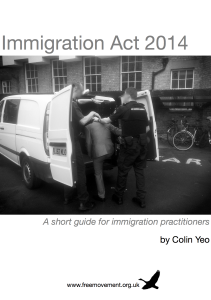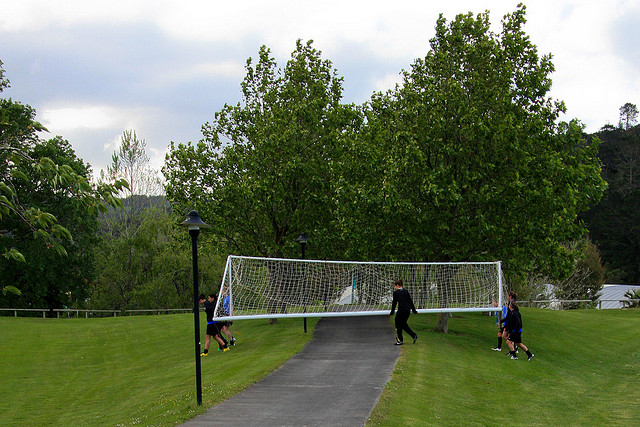- BY Colin Yeo

Court of Appeal examines new human rights statute and rules
THANKS FOR READING
Older content is locked

A great deal of time and effort goes into producing the information on Free Movement, become a member of Free Movement to get unlimited access to all articles, and much, much more
TAKE FREE MOVEMENT FURTHER
By becoming a member of Free Movement, you not only support the hard-work that goes into maintaining the website, but get access to premium features;
- Single login for personal use
- FREE downloads of Free Movement ebooks
- Access to all Free Movement blog content
- Access to all our online training materials
- Access to our busy forums
- Downloadable CPD certificates
In the case of YM (Uganda) v Secretary of State for the Home Department [2014] EWCA Civ 1292 the Court of Appeal has examined the effect of the new Immigration Act 2014 human rights statutory considerations and the accompanying changes to the Immigration Rules. The court concludes that the new regime is irrelevant when considering whether an error of law was made but will be relevant where an appeal is being remade if an error of law is found.
The case concerned a thirty year old man born in Uganda who had entered the UK aged six. He had committed some violent offences between the ages of 15 and 19 and then later was convicted of attending a terrorist training camp. He was married to a British citizen and had three children.
The Home Office began deportation proceedings which were originally overturned on appeal by the First-tier Tribunal before being upheld on the Home Office’s appeal by the Upper Tribunal. The applicable law at that time was the 2012 human rights regime. Before the hearing in the Court of Appeal, though, the Immigration Act 2014 came into force and any court or tribunal suddenly had to have regard to new human rights considerations, which I will refer to here as the 2014 human rights regime.
Which human rights regime applies when?

The court took the view, accepted by the Home Office, that the 2014 human rights regime was not relevant while the court was considering whether an error of law had been committed by the Upper Tribunal. However, if a decision had to be re-made because there was an error of law, the new 2014 regime should be applied (see earlier post New statutory human rights regime takes immediate effect). The court makes no distinction between the Act and the Immigration Rules in this regard.
The same reasoning and approach would obviously apply in the Upper Tribunal: when considering whether there is an error of law in a determination promulgated before 28 July 2014 the new regime is not relevant, but if re-making a decision then then the new regime must be applied.
Correct interpretation of 2012 regime
The Home Office attempted to argue that the word “offence” in paragraph 398 actually meant “offences”, and therefore that any previous periods of imprisonment needed to be considered cumulatively. The Court of Appeal roundly rejected this imaginative argument:
I am not prepared to manipulate the wording of Rule 398(a) to such an extent to produce that result. We have to construe the words sensibly in their normal and natural meaning.
However, this did not avail YM, as he could not show that he had 15 years of continuous of lawful residence prior to the decision to deport him, as required by paragraph 399A(b).
The court goes on to endorse obiter dicta the tribunal case of Izuazu on the meaning of “insurmountable obstacles” (the term is not to be interpreters literally but to be read as equivalent to Article 8) and Ogundimu on the meaning of “no ties” (both cases written up in this earlier blog post: Human rights and the immigration rules). The court specifically comments that the ties of other relatives are irrelevant and finds that the Upper Tribunal had erred in law in three ways in limiting its consideration to whether YM had extended family in his country of nationality, Uganda:
First, the UT assumed that ties of YM’s mother are either equivalent to ties of YM himself or that they go a long way to proving that he has ties. But that is not the nature of the enquiry that has to be undertaken: it is YM’s ties that count. Secondly, the UT did not conduct a “rounded assessment of all the relevant circumstances” concerning possible ties of YM with Uganda. It did not conduct any assessment at all of YM’s circumstances, as opposed to those of his mother. Thirdly, the UT did not ask itself the question: did YM have a continued connection with life in Uganda, such that he would have support were he to be returned there.
This approach contrasts with the recent Home Office refusal letter I quoted (Home Office relying on explicitly racist reasoning to reject human rights cases) in which children were said to have inherited their parents’ “culture” to the extent that being sent to a country they had never visited was not unduly harsh. The notion of inherited race as a cultural and even geographic characteristic — each race in its proper place — has regained ground in our immigration discourse and needs to be called out, confronted and eliminated. This judgment is therefore very much to be welcomed as reminding us that it is the characteristics of the individual, not their family, that are to be evaluated.
Outcome
The court remitted the appeal to the Upper Tribunal to re-decide taking into account the new statutory human rights considerations. No comment is made on the proper interpretation of those considerations. On reconsideration, though, it looks like YM will not be able to rely on the “no ties” approach of the 2012 regime as that has been replaced with a rather different reintegration test in the 2014 regime (see earlier post on Statement of Changes HC 532).
 Image credit: Russellstreet
Image credit: Russellstreet
SHARE


3 responses
With regard to the test under 276ADE(vi) and 399A(a) and (b) having changed from ‘no ties’ to ‘very significant obstacles to his integration’ I am not sure that the new test would apply under the rules if the SoS’s immigration decision had been taken before 28 July 2014. The relevant part of the Statement of Changes says:
The changes set out in paragraphs 4 to 12 and 49 to 64 of this statement take effect on
28 July 2014 and apply to all applications to which paragraphs 276ADE to 276DH
and Appendix FM apply (or can be applied by virtue of the Immigration Rules), and
to any other ECHR Article 8 claims (save for those from foreign criminals), and
which are decided on or after that date.
The change set out in paragraph 13 of this statement takes effect on 28 July 2014.
The changes set out in paragraphs 14 to 30 of this statement take effect on 28 July
2014 and apply to all ECHR Article 8 claims from foreign criminals which are
decided on or after that date.
So the new test applies to applications and Article 8 claims ‘which are decided on or after that date’. Given that it is the Rules which are being changed, surely ‘decided’ in this context must mean decided by the SoS? If the Appellant meets the ‘no ties’ test, the decision is not in accordance with the law including the Rules and so must be allowed.
However, for those who would benefit from the ‘very significant obstacles to integration’ test (perhaps a person whose medical condition would lead to death in short order and who therefore faced insurmountable obstacles to integration) it must also be arguable that the new test represents the view taken on proportionality by the SoS at the date of the Tribunal’s decision, thus demonstrating an Article 8 breach.
I realise this is an optimistic ‘having your cake and eating it’ line of argument, so if it is fatally flawed, someone please disabuse me!
I agree, Ed, but the Court of Appeal doesn’t seem to look at the terms of the actual commencement order unfortunately!
Good point Ed and I think the Court of Appeal was primarily addressing s.117 and not the 28th July rules changes although I can see it can be taken as both.
The question, which somewhat inevitably is being asked in a number of applications that were made under the 2012 approach and will be decided under the 2014 approach (because, although the Court of Appeal has effectively grandfathered tribunal decisions, this does not apply to Home Office decisions and still less applications), is whether having “no ties” in the Ogundimu sense is itself capable of being a “significant obstacle to integration” under the new approach.
Although really that is just a sub-question of the rather broader “what on earth does “significant obstacle to integration” actually mean?” question which no doubt there will be tribunal comment on in due course…